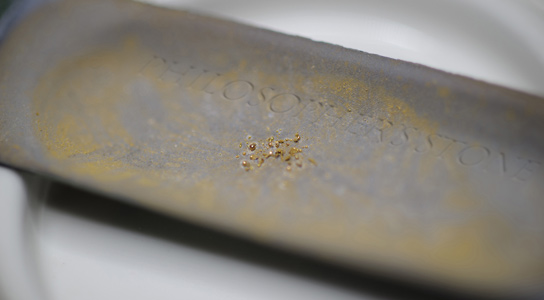
Gold flecks produced by the art-science experiment “The Great Work of the Metal Lover,” by Adam Brown, MSU associate professor of electronic art and intermedia. Credit: Photo by G.L. Kohuth
Researchers at Michigan State University have discovered that the bacterium Cupriavidus metallidurans has the ability to withstand incredible amounts of toxicity, which is apparently key to creating 24-karat gold.
Kazem Kashefi and Adam Brown found that the metal-tolerant bacteria C. metallidurans can grow on massive concentrations of gold chloride, a toxic chemical compound found in nature. They exhibited their findings as part of the cyber art competition Prix Ars Electronica in Linz, Austria.
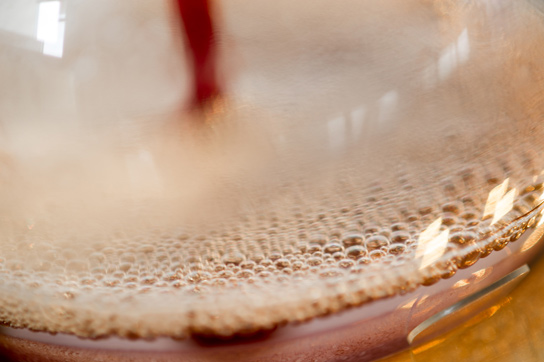
A bioreactor uses a gold-loving bacteria to turn liquid gold into usable, 24-karat gold. Credit: Photo by G.L. Kohuth
The bacteria are at least 25 times stronger than previously reported. Their work is part of an art installation called The Great Work of the Metal Lover, which uses biotechnology, art, and alchemy to turn liquid gold into pure gold.
The scientists fed the bacteria unprecedented amounts of gold chloride, mimicking a process that they believe happens in nature. In about a week, the bacteria transformed the toxins and produced a gold nugget.
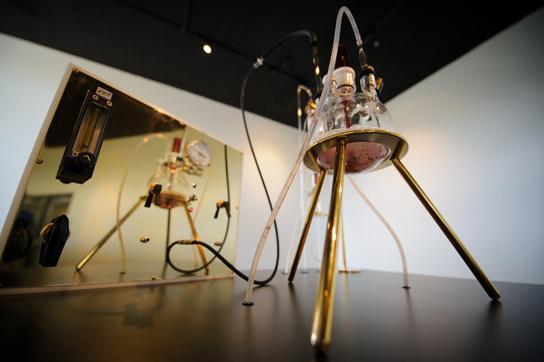
“The Great Work of the Metal Lover” by Adam Brown, MSU associate professor of electronic art and intermedia. Credit: Photo by G.L. Kohuth
It would be cost-prohibitive to produce gold on a large scale using this technique, so finding gold in mines is still the best bet for using it as a natural resource. Their installation was on display until the 7th of October.




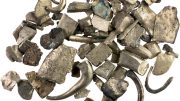


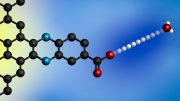

Be the first to comment on "Bacterium Cupriavidus Metallidurans Can Turn Toxins into Gold"